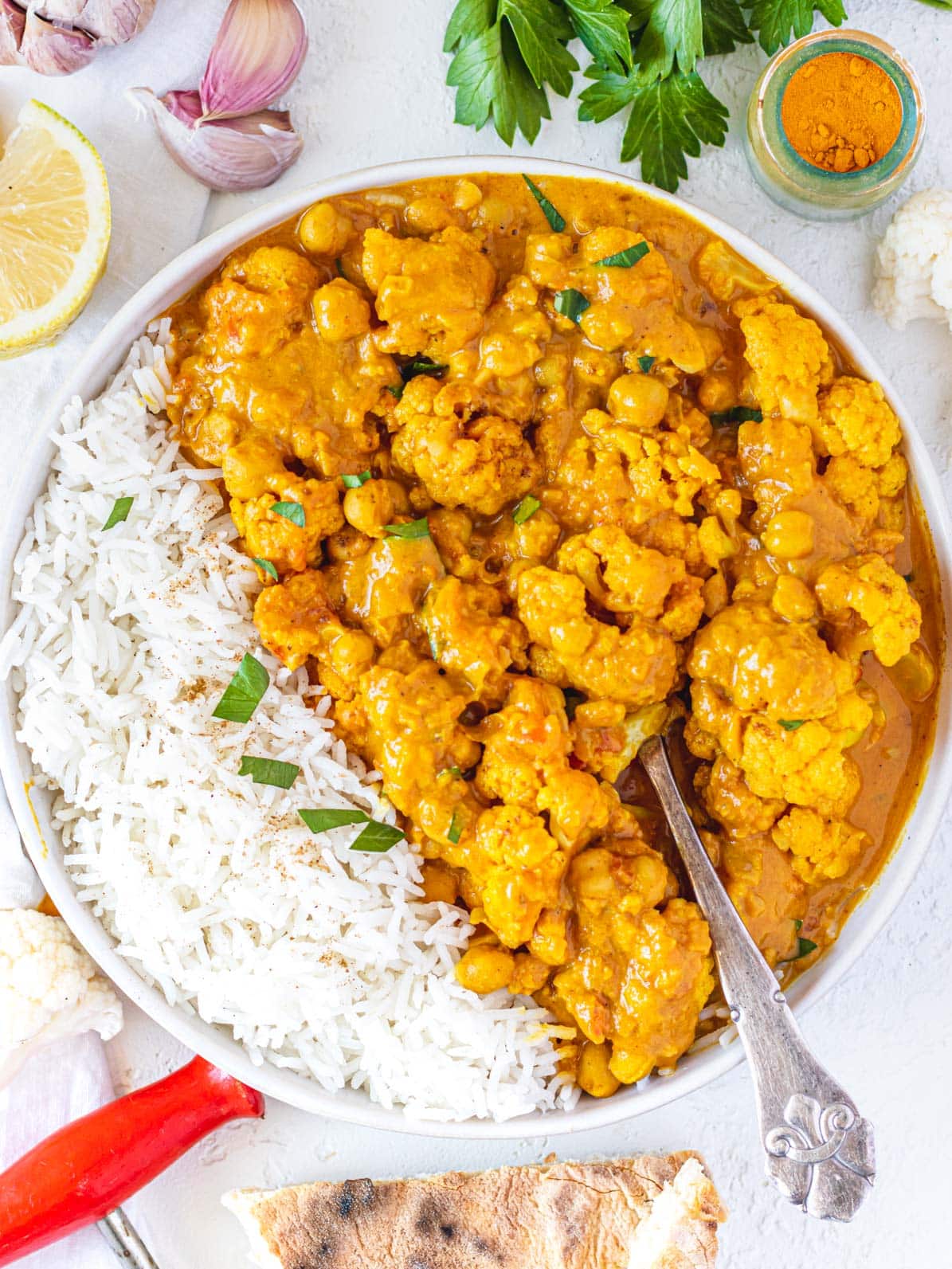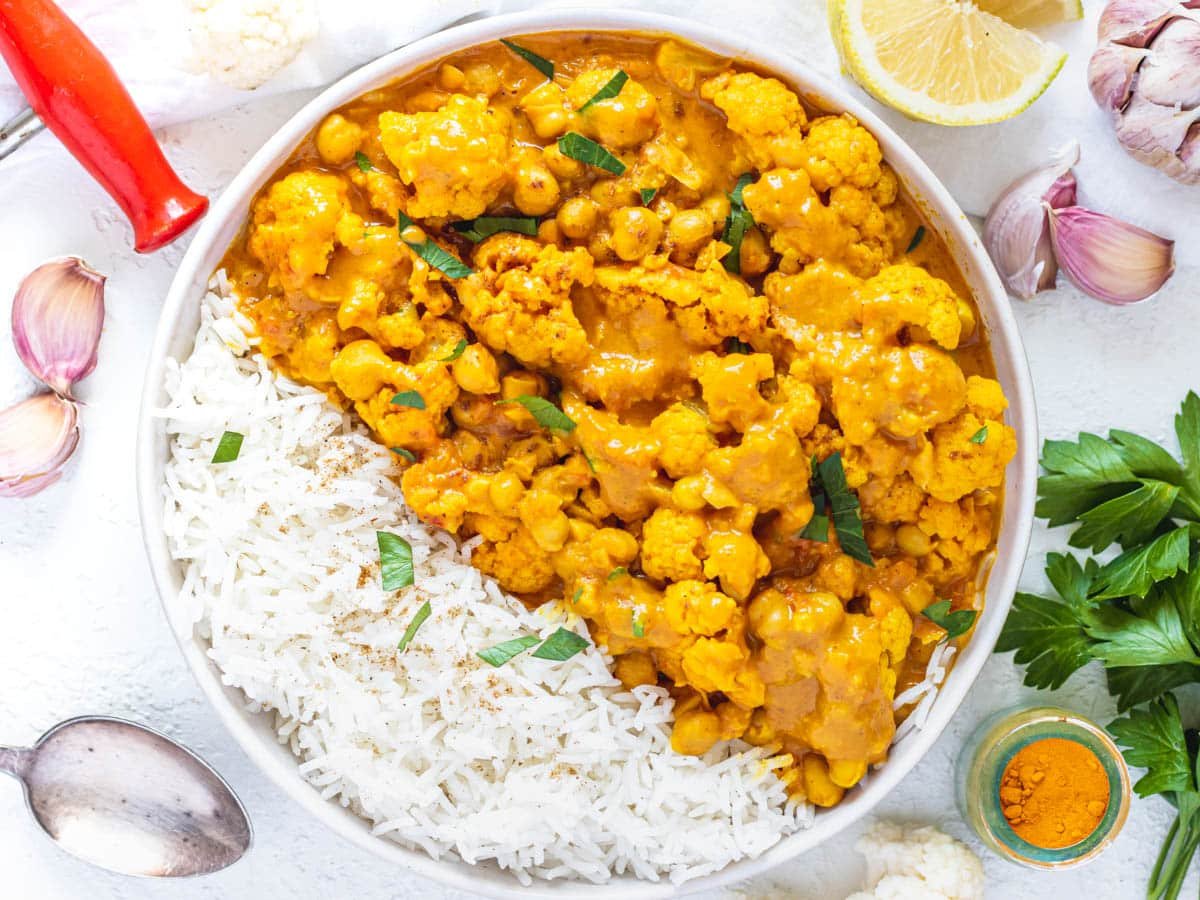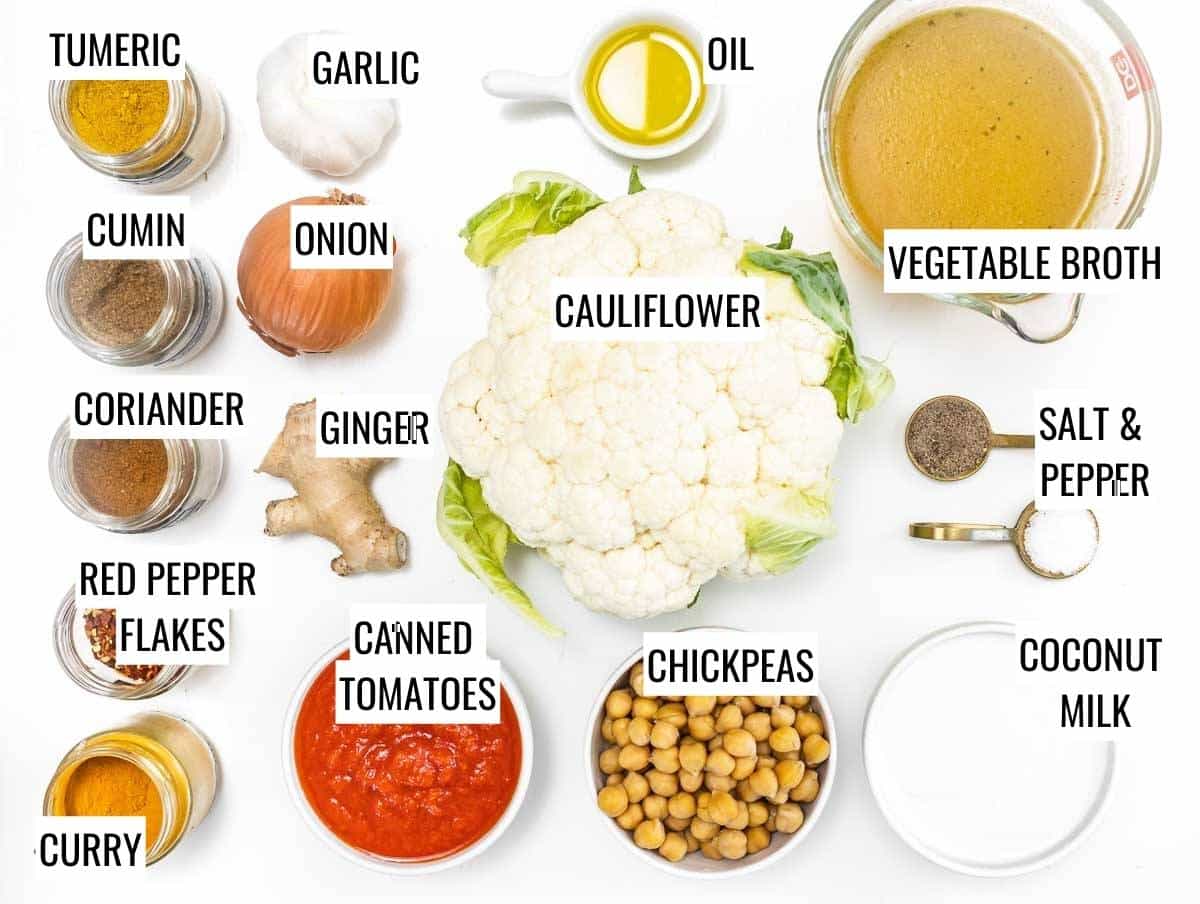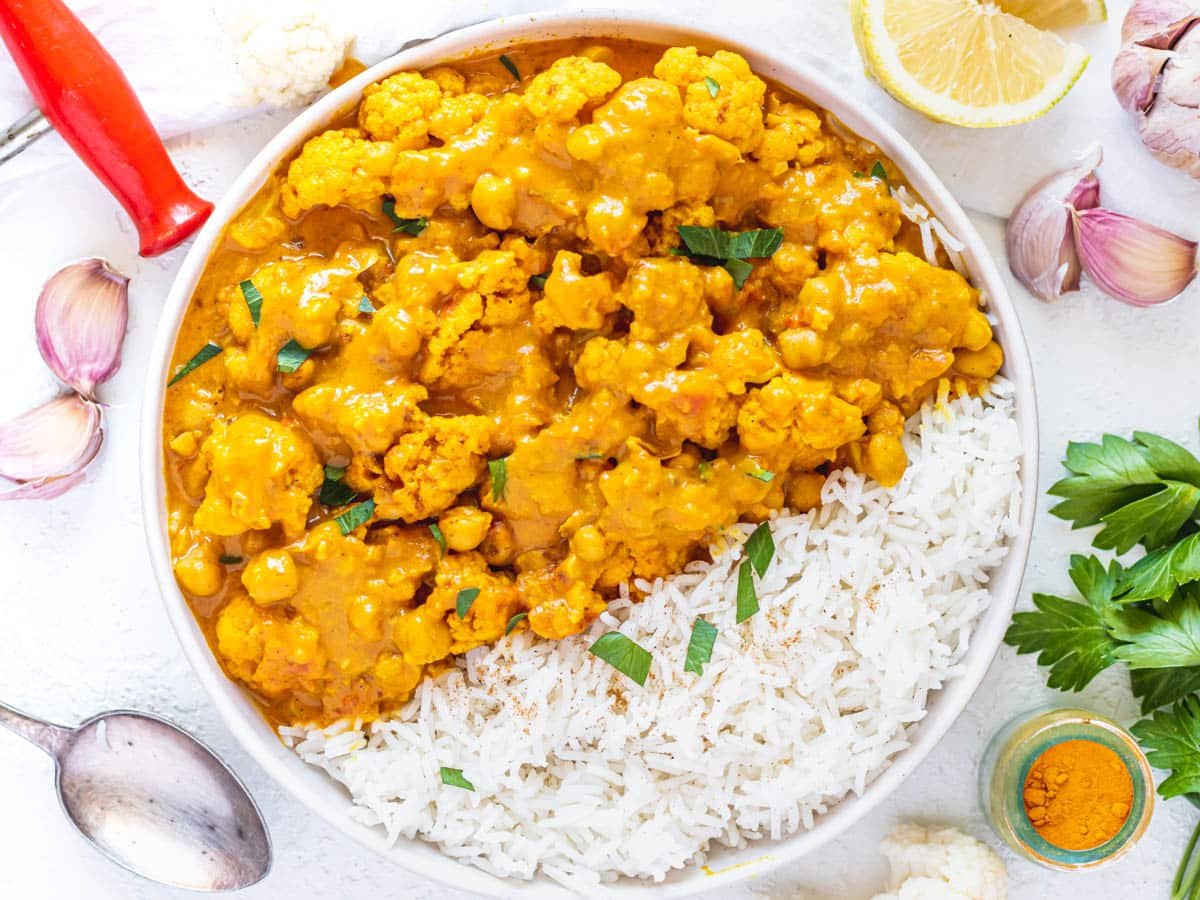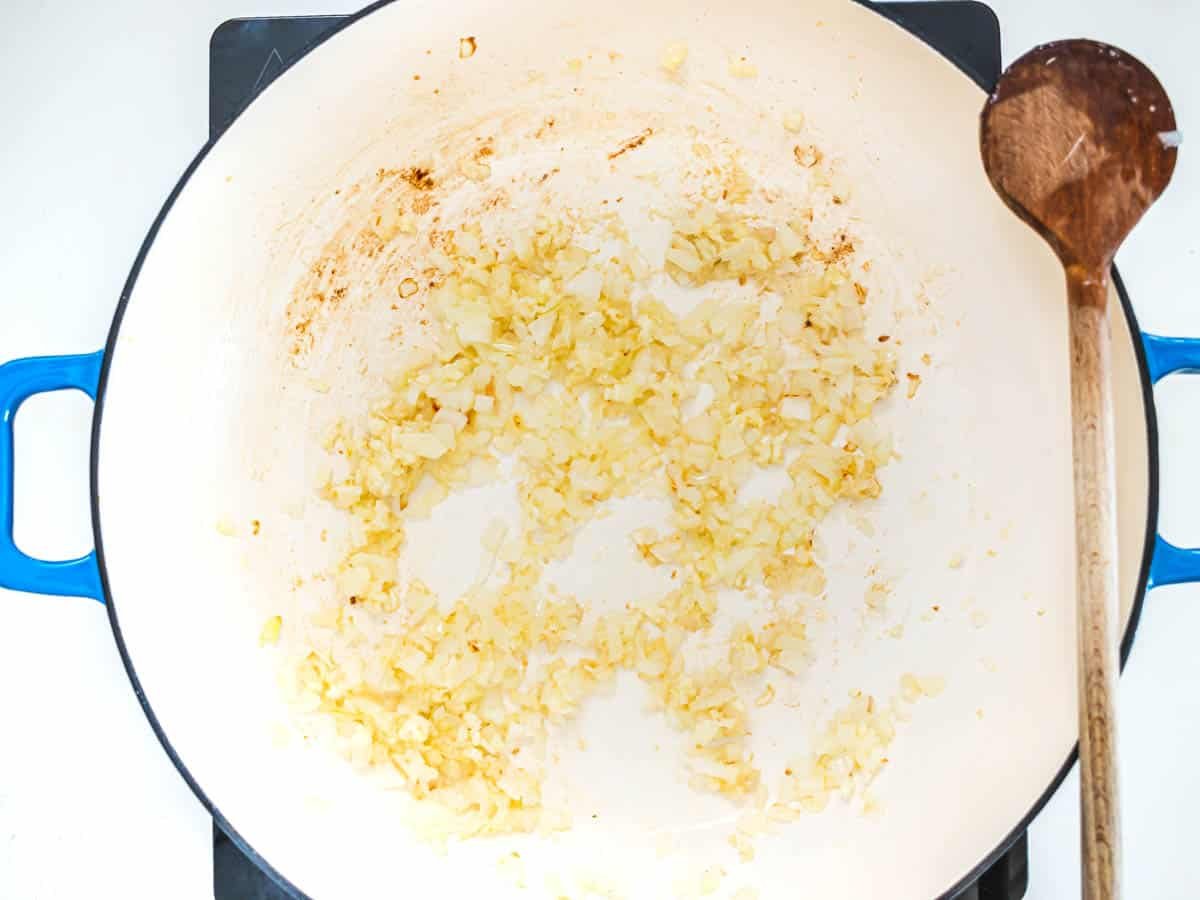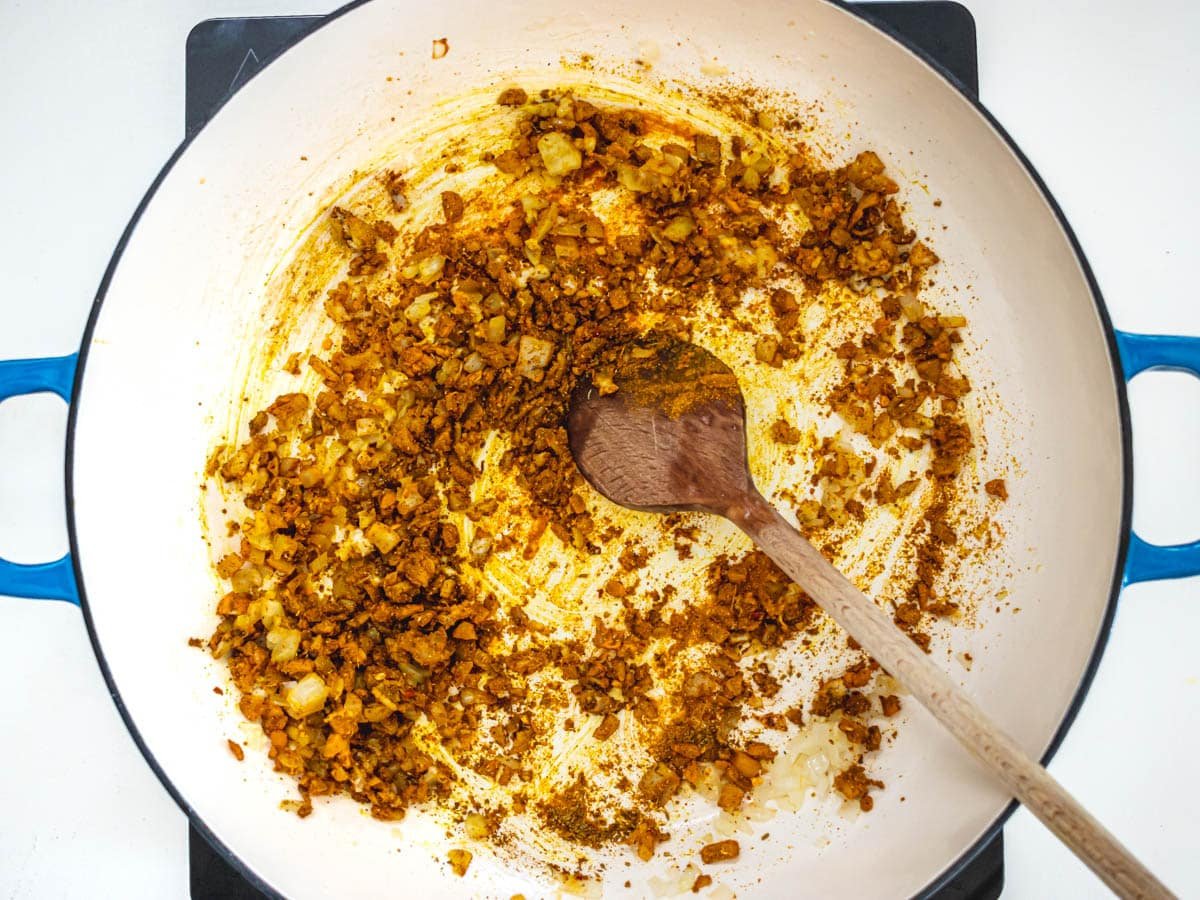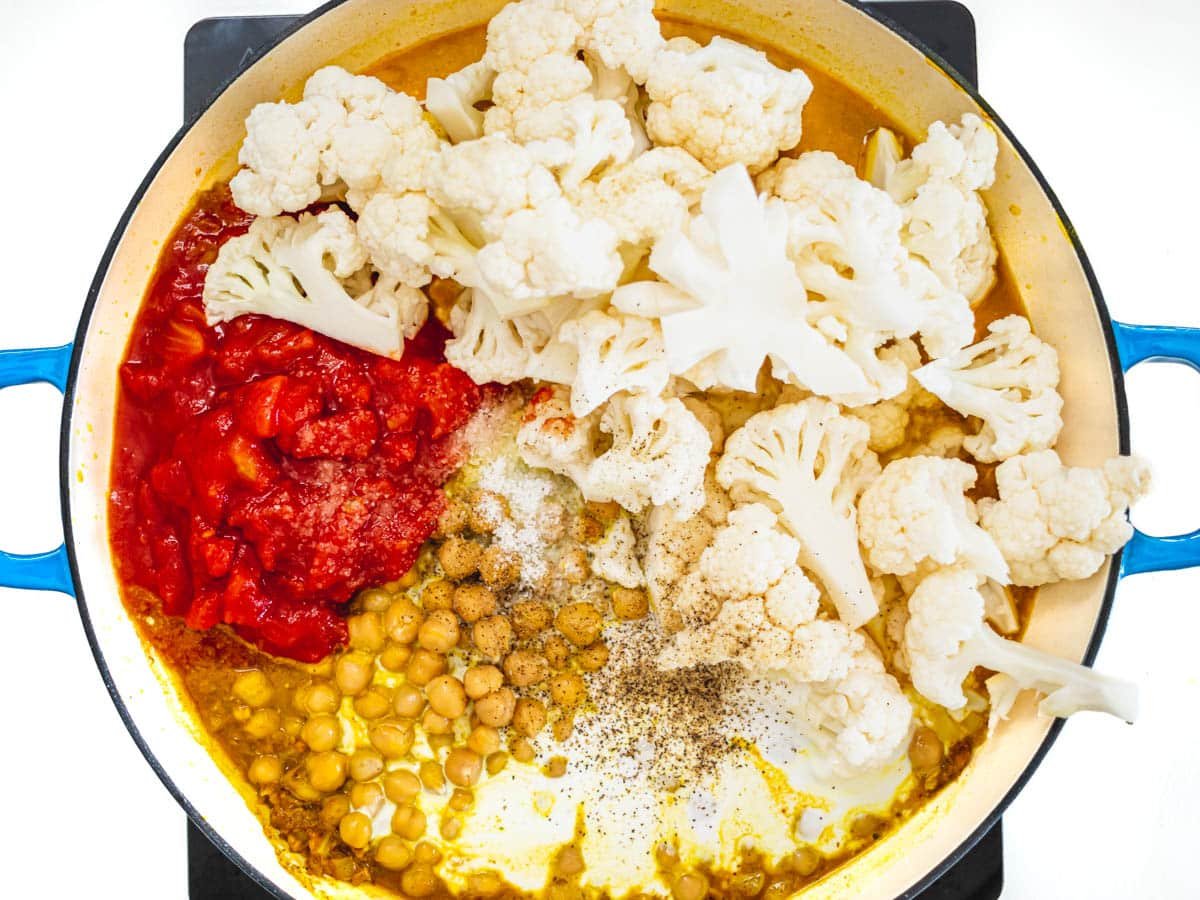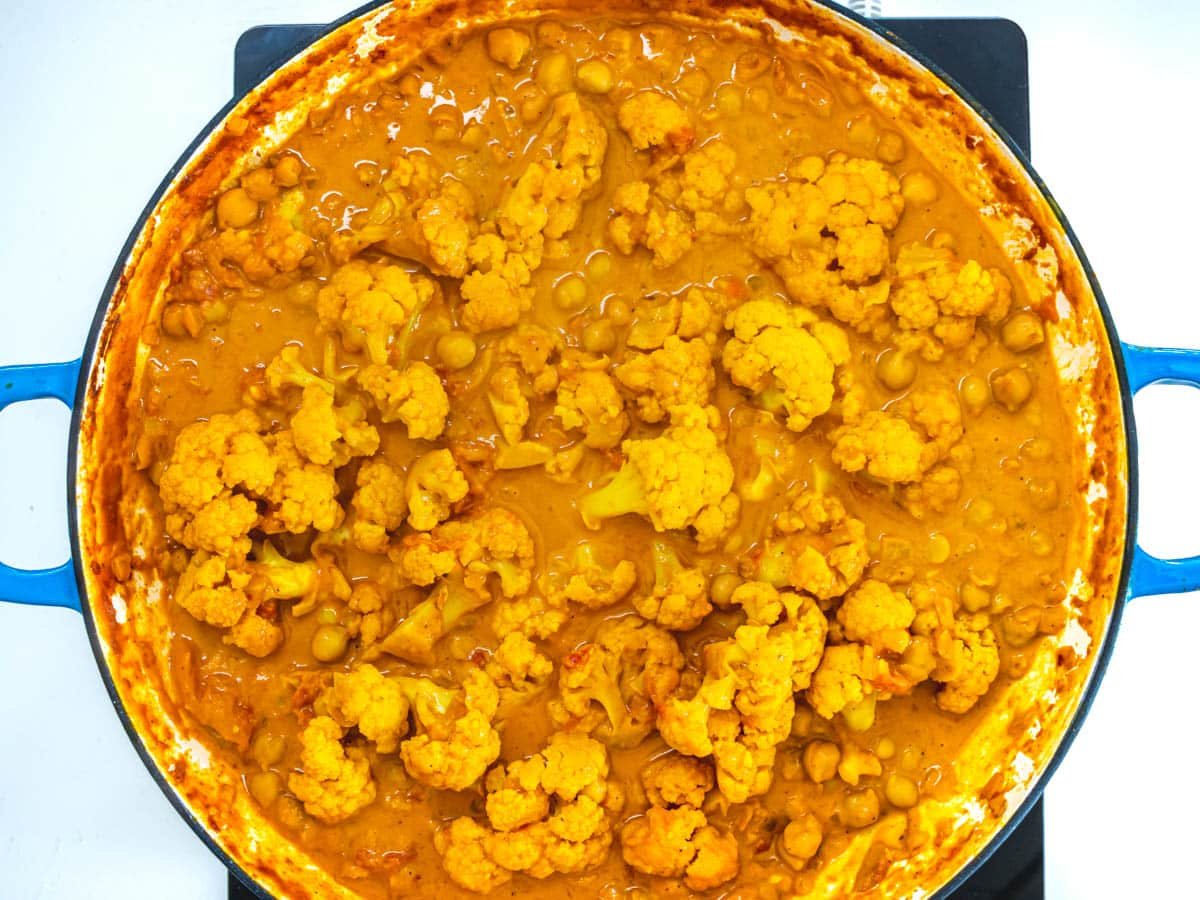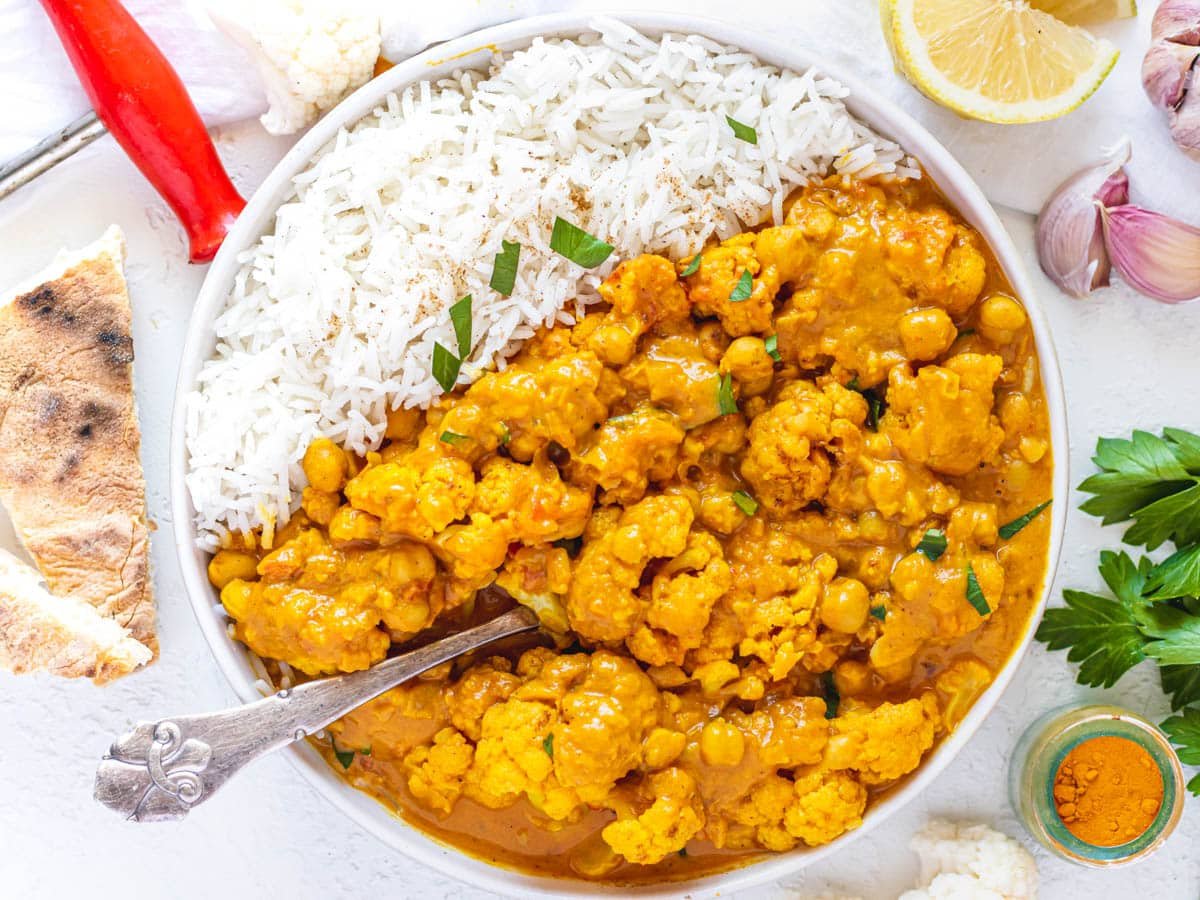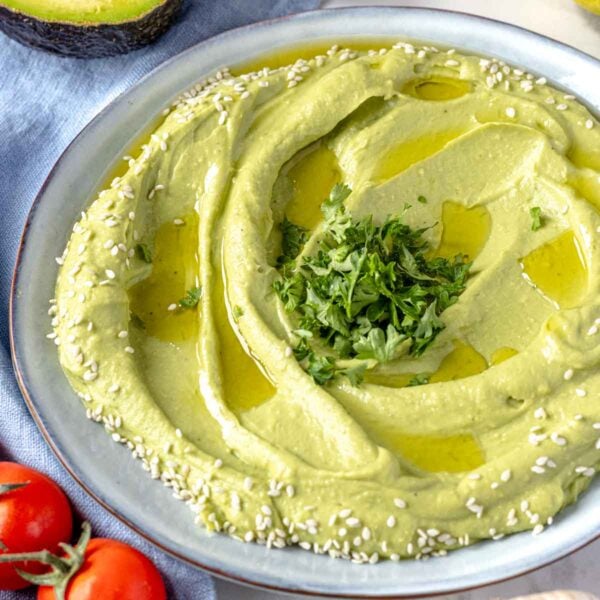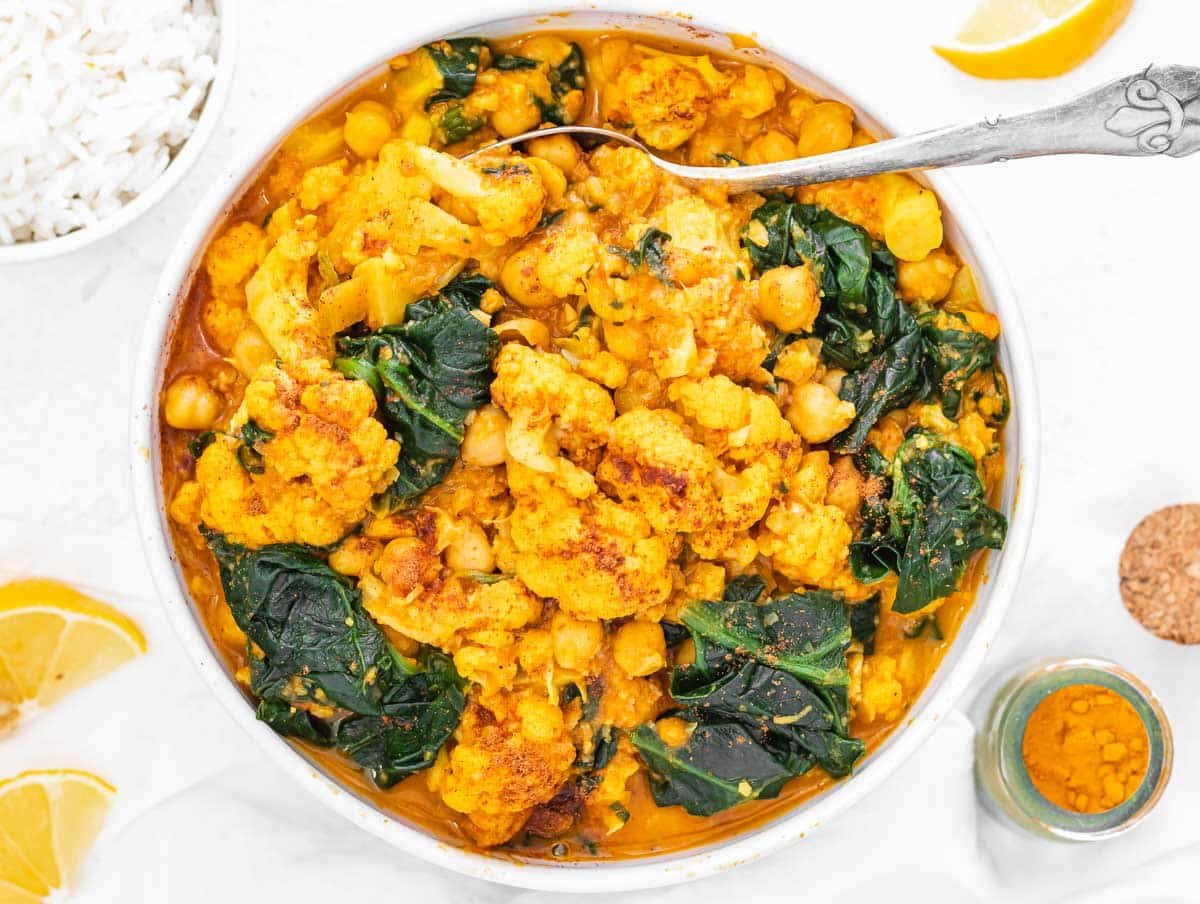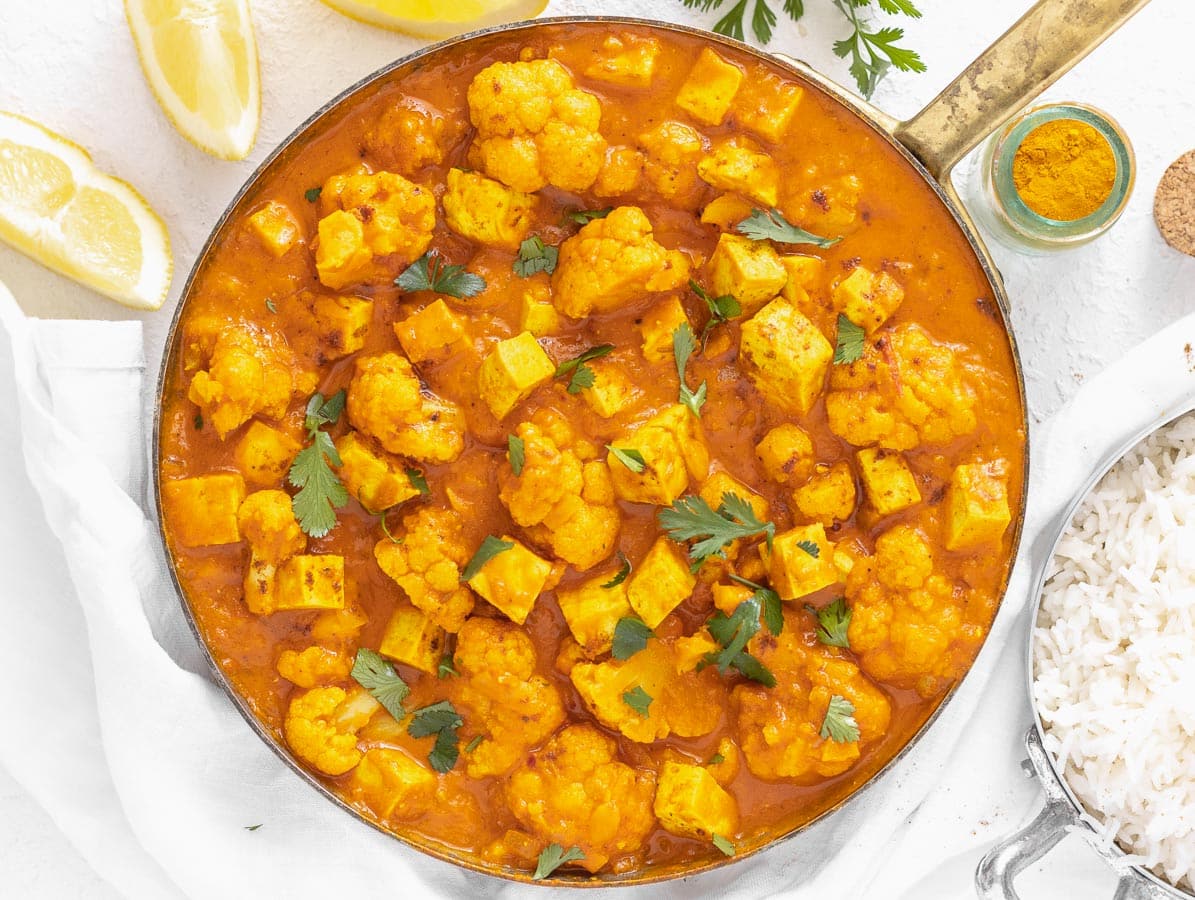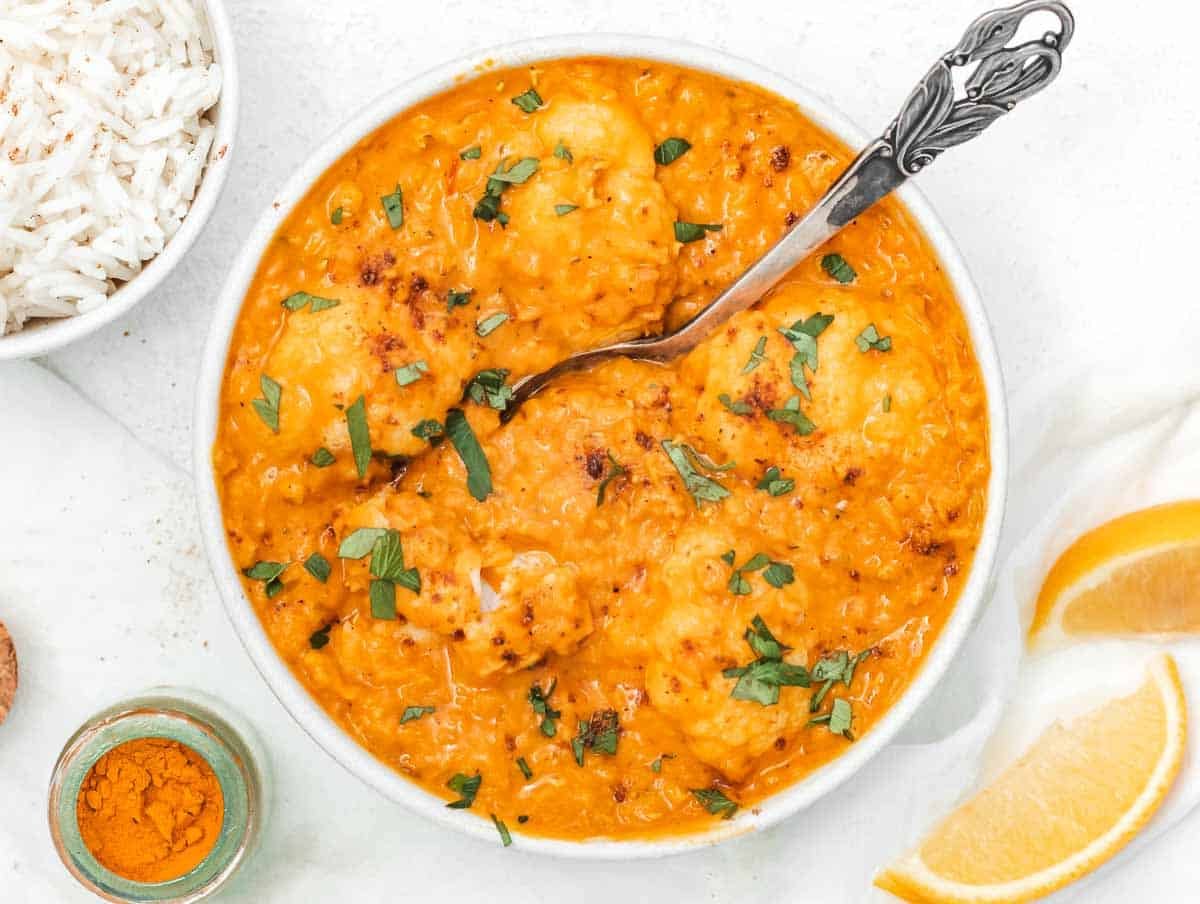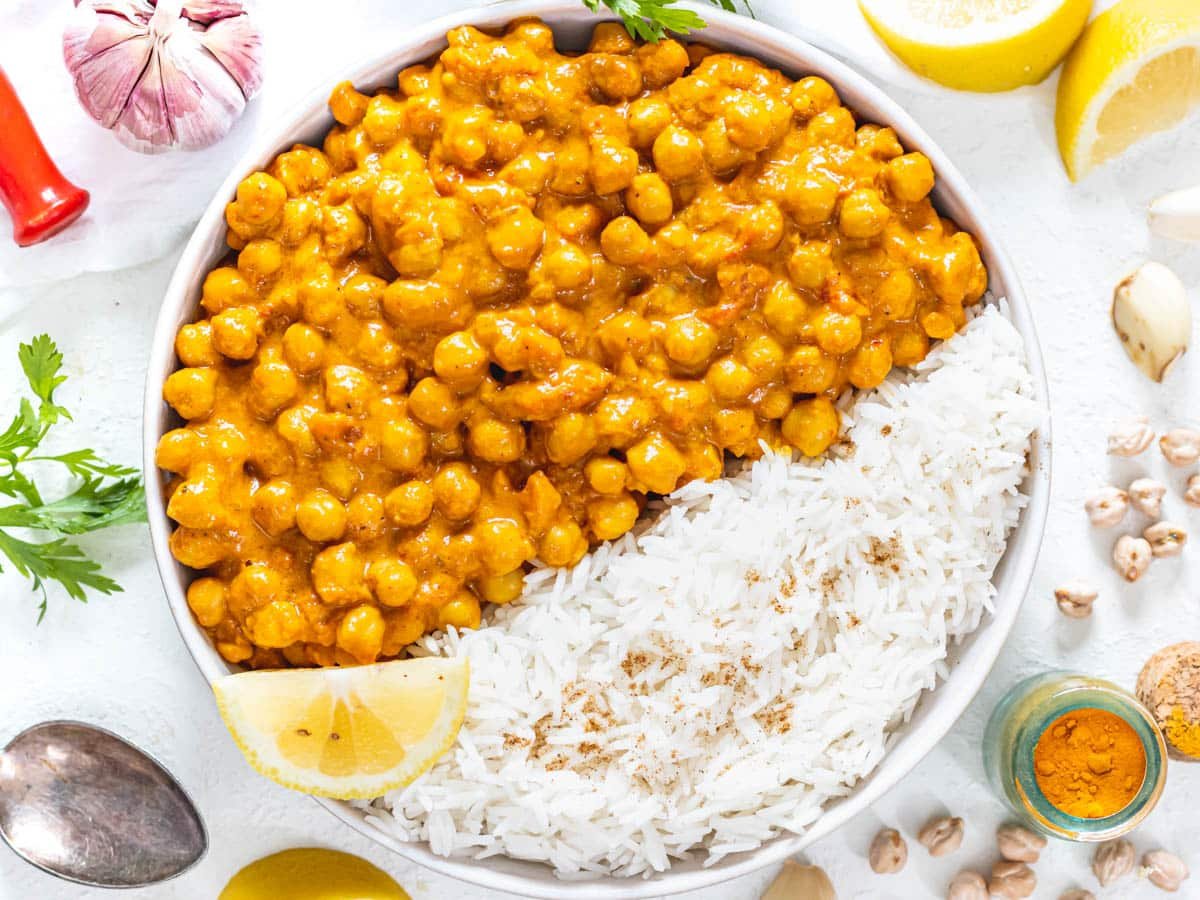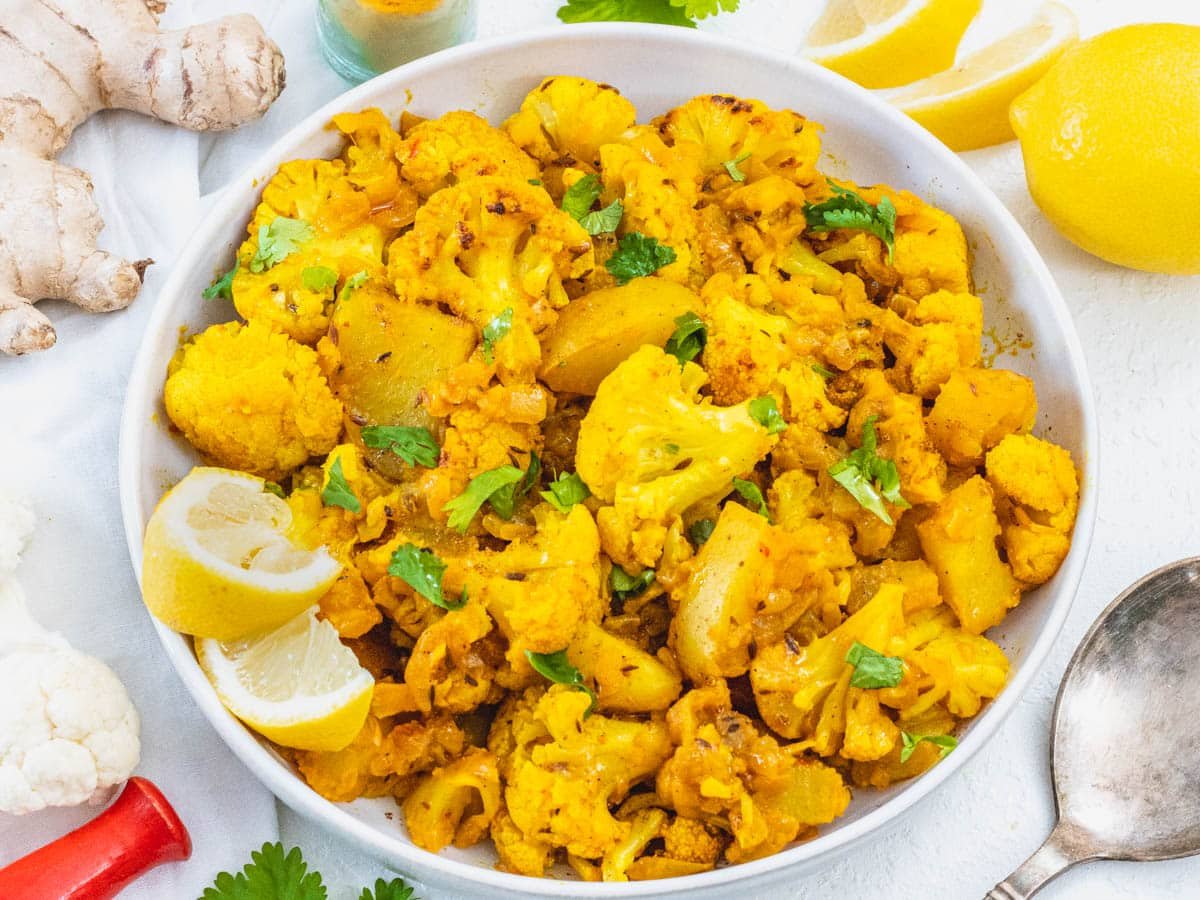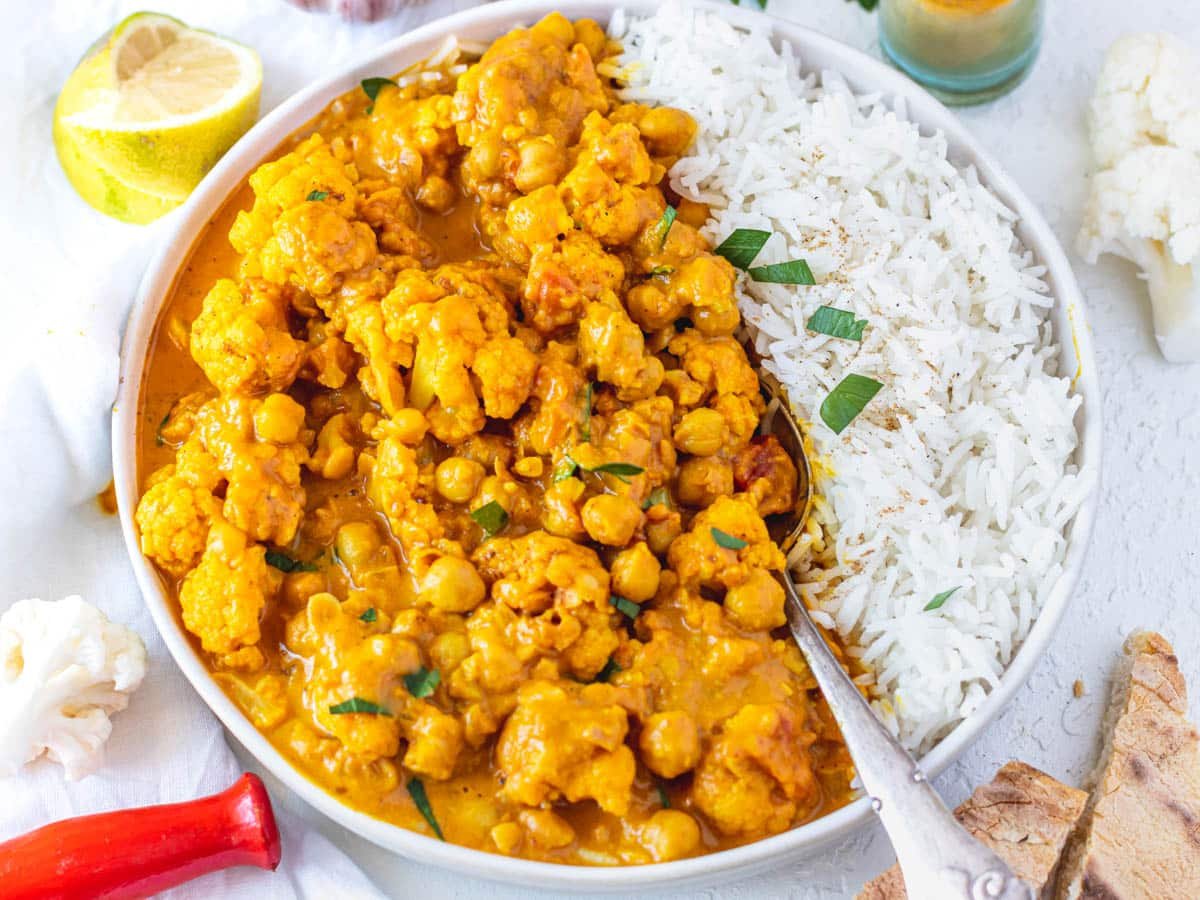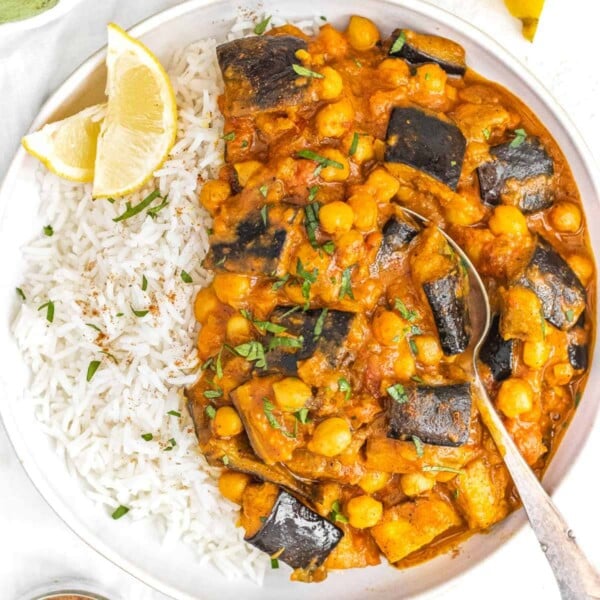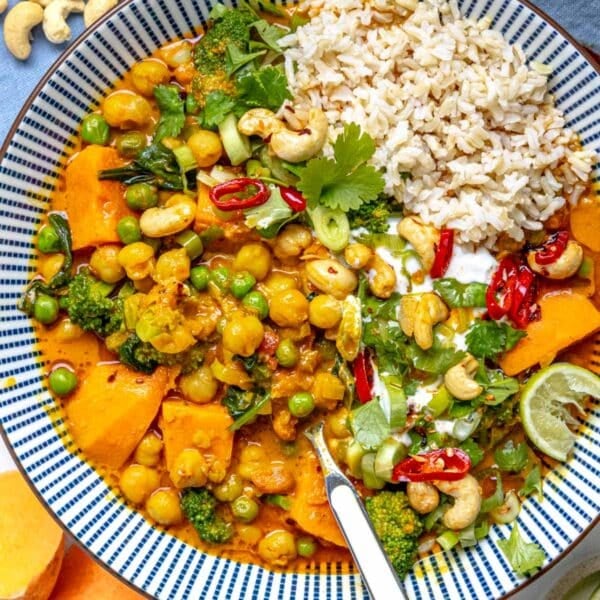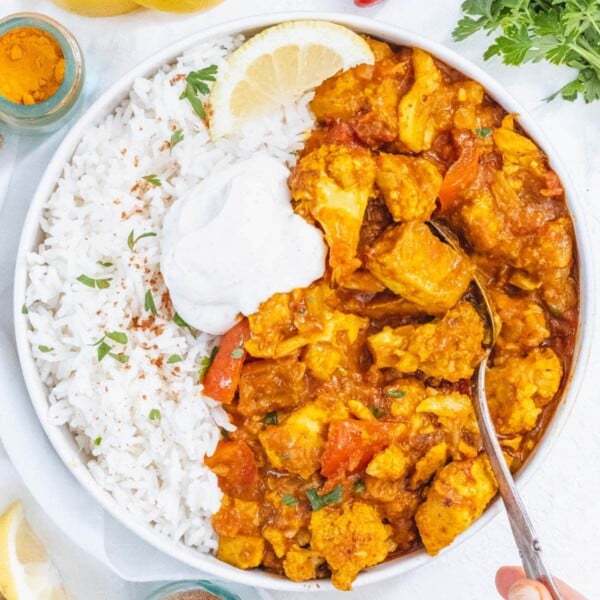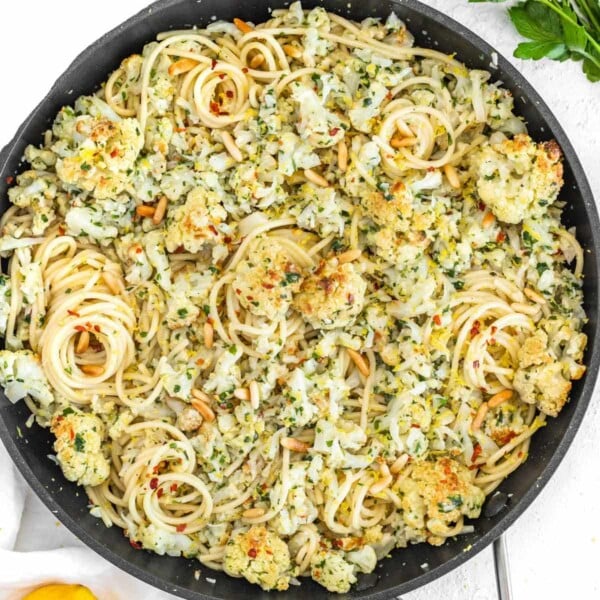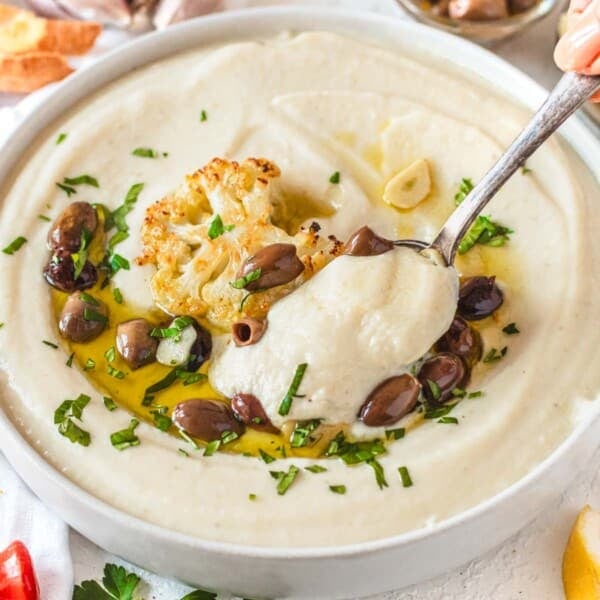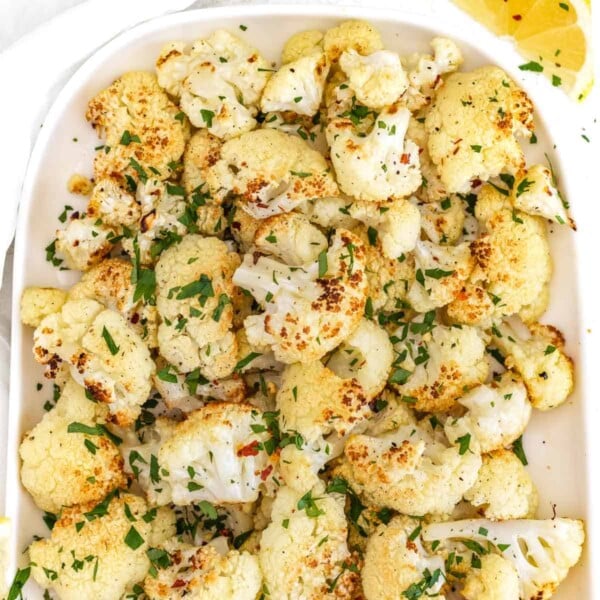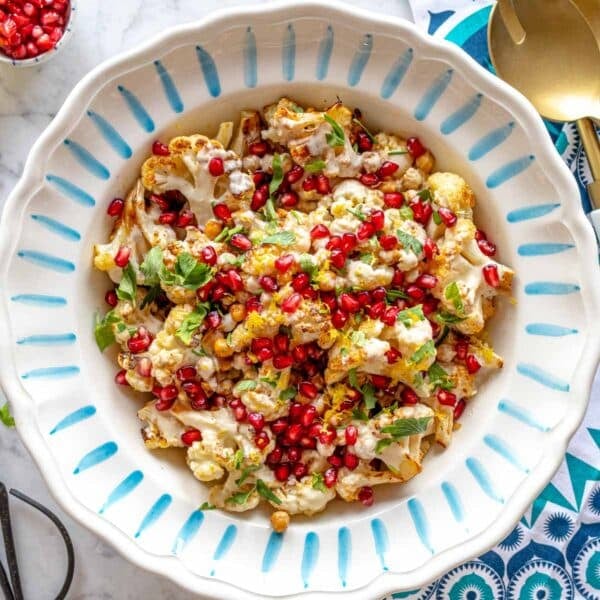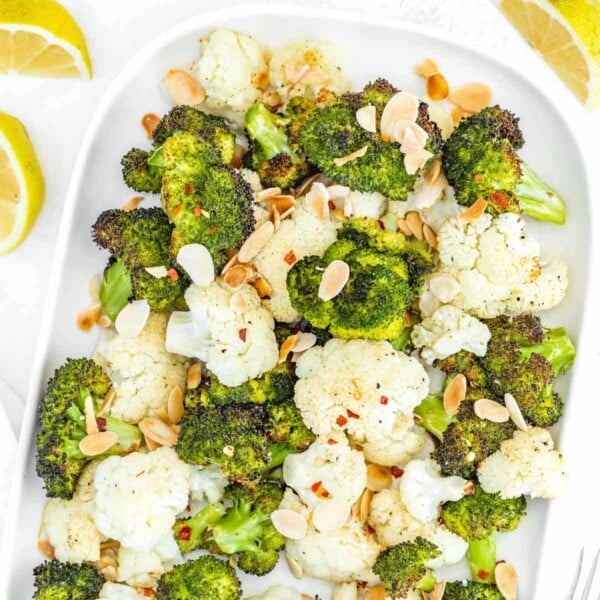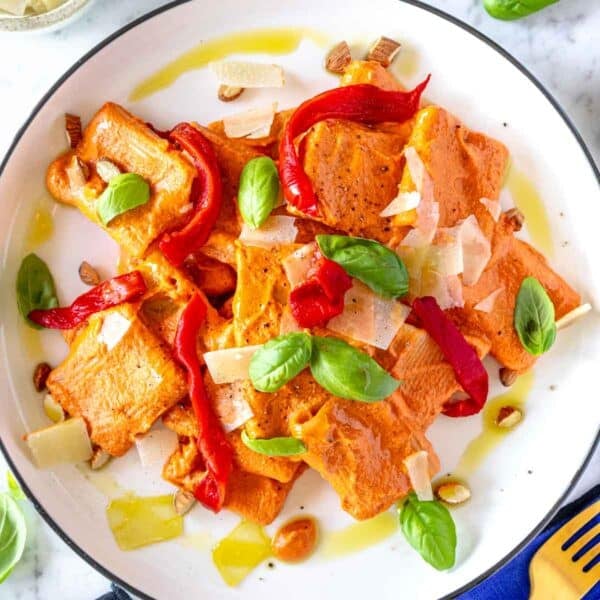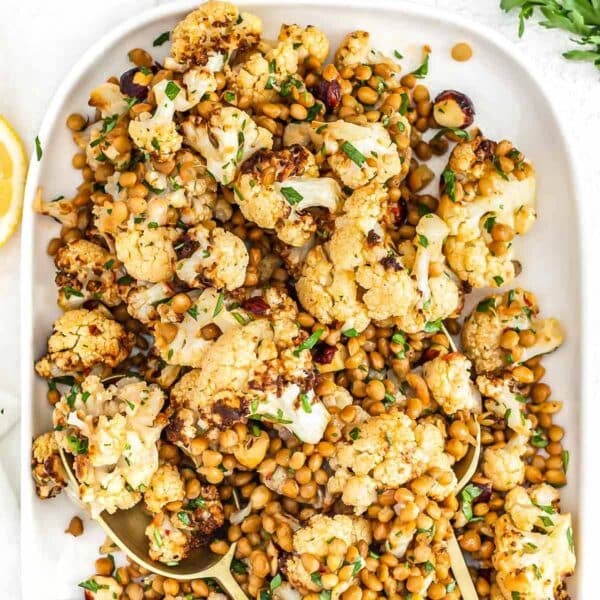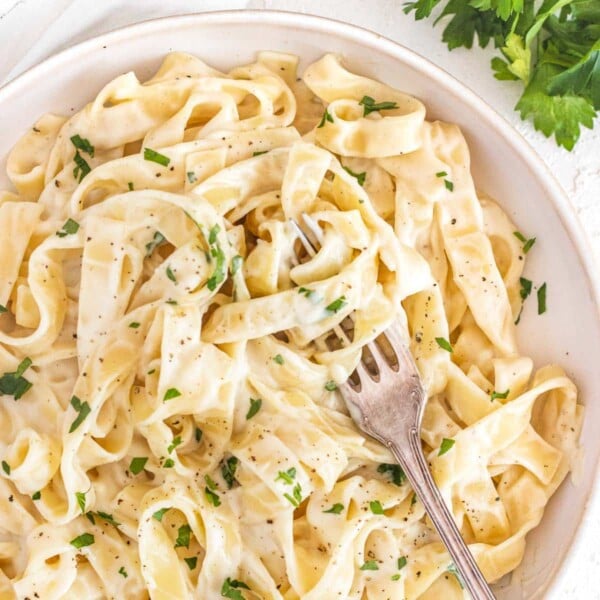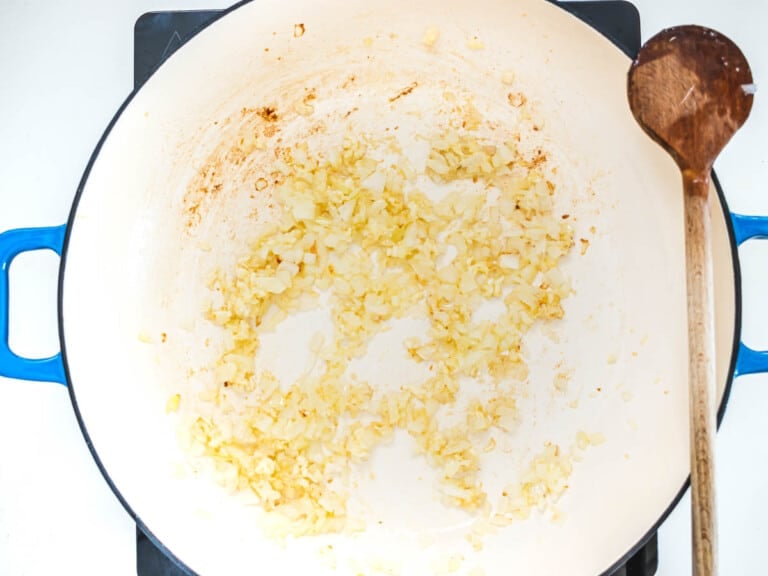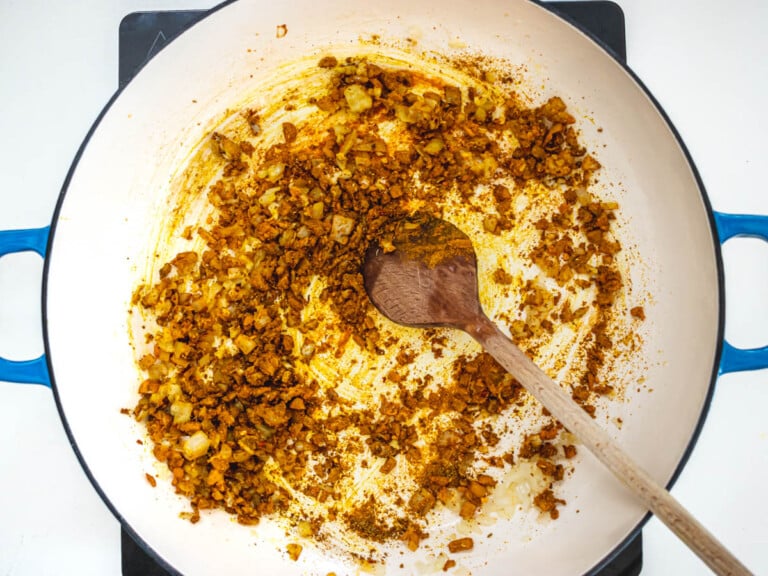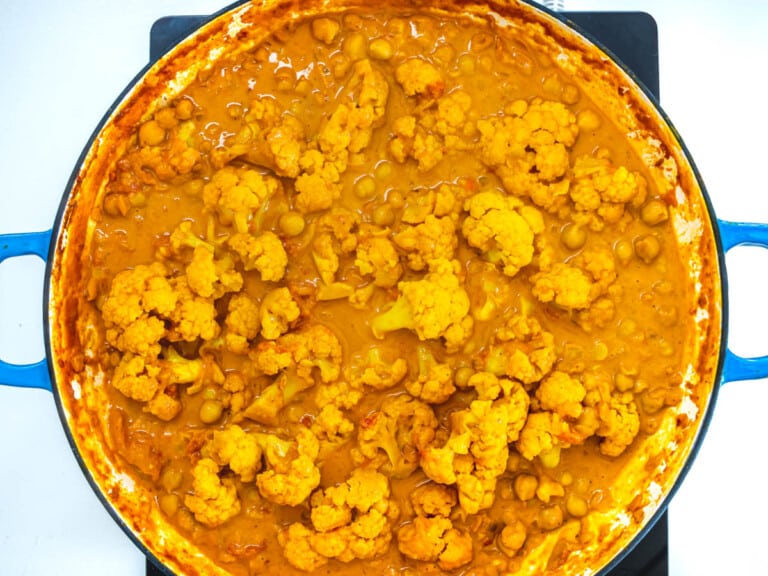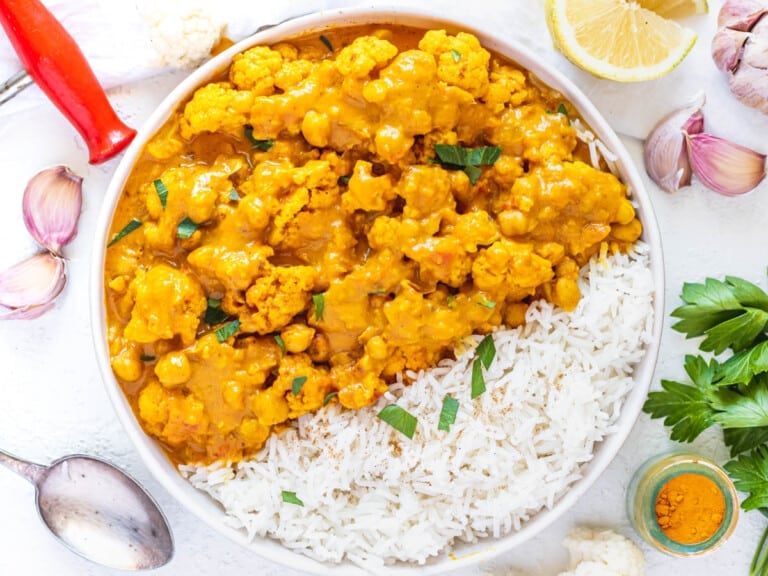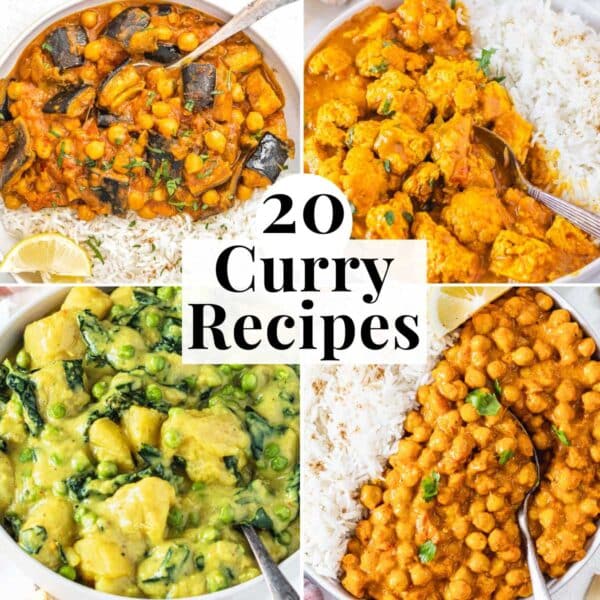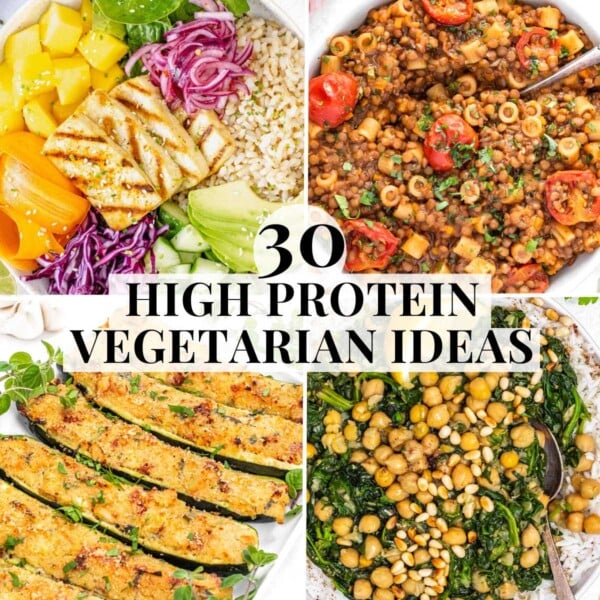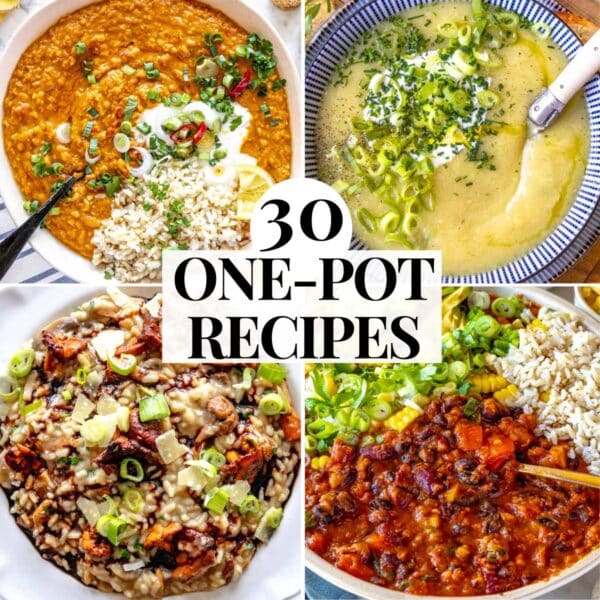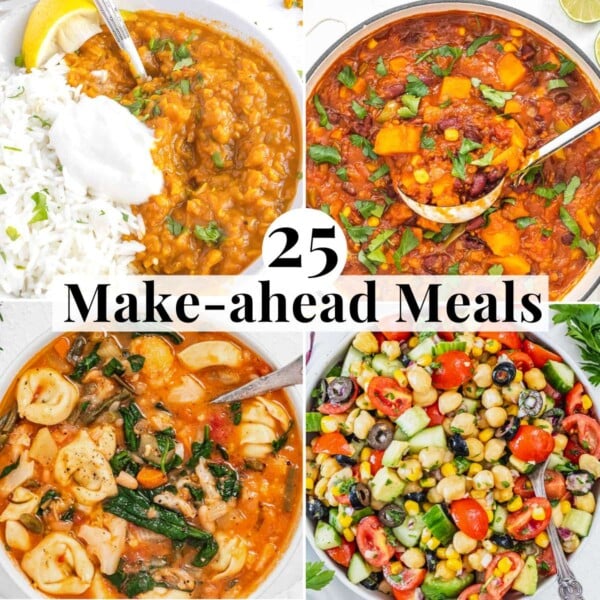This is a wholesome and nutritious meal packed with flavors and aromas. It’s excellent for both omnivores and vegetarians and works well for meal prep, too.
Cauliflower curry video
Ingredients & Substitutions for cauliflower curry
How to make cauliflower curry
Serving suggestions
Variations
Lentil curry with cauliflower
Storage
This recipe is suitable for a vegetarian, vegan, and gluten-free diet. You can customize the intensity of this curry by adding more or less spices. Our recipe is mild, suitable for most palates, and an excellent starting point. Thanks to its simplicity – it’s ready in 30 minutes in one pot – you can make cauliflower curry for a weeknight family dinner. And because it stores well, the recipe is also excellent for meal prep. Leftovers are even tastier as the flavors have time to meld. Substitute diced potatoes, sweet potatoes, green beans, pumpkin, and eggplant for cauliflower.
Chickpeas
Canned chickpeas allow you to make this recipe in less than 30 minutes. In addition, they add a pleasant nutty taste and wholesome plant protein that makes the dish more fulfilling and nutritious. If you use dry chickpeas, soak them overnight first, then boil them for about 2 hours (or until tender) in a pot with plenty of lightly salted water. Substitute any lentils, beans, and peas for the chickpeas.
Onion, Garlic, and Ginger
Gently fried in a little olive oil, garlic, onion, and ginger are the flavor base of this cauliflower curry and add a ton of flavor to the dish. We use white or yellow onion, freshly grated garlic, and freshly grated ginger. Substitute garlic and ginger paste for fresh garlic and ginger.
Olive oil
Although this is an Indian-inspired curry, we use extra virgin olive oil because that’s the healthiest oil with the most antioxidants and because it tastes delicious here. Substitute avocado oil, coconut oil, or any other vegetable oil for olive oil.
Tomatoes
You can use canned crushed tomatoes, diced tomatoes, tomato puree, or whole peeled tomatoes. Substitute fresh tomatoes, but it’s best if they are ripe and in season.
Coconut milk
We love full-fat coconut milk in a curry. It adds a creamy, velvety, and slightly coconutty taste that is irresistible with cauliflower, chickpeas, and spices. Substitute reduced-fat coconut milk or vegetable broth for full-fat coconut milk.If you decide not to use coconut milk, we recommend reducing the spices in the curry.
Spices, Salt, Sugar
The combination of spices is what makes this curry special. To make a basic curry, we recommend:
Curry powder Ground cumin or cumin seeds Red pepper flakes Ground coriander Turmeric Garam masala
We also add sea salt and black pepper to make the flavor of the spices pop. A tablespoon of sugar is optional. It mellows the spices and makes the other flavors pop. Note: add garam masala at the end, with the heat off, and not at the beginning with the other spices.
Vegetable broth
We use vegetable broth to cook the cauliflower and produce a more flavorful curry than if you used water.
Fresh herbs and lemon
Fresh herbs are optional; however, you can top your cauliflower curry with cilantro (fresh coriander leaves) or fresh flat-leaf parsley. We recommend adding a squeeze of lemon juice (or lime juice) on top of your curry just before eating it and a dollop of yogurt or plant-based yogurt. The acidity is a welcome flavor booster and prepares your taste buds for the beautiful symphony of spices. Heat the oil in a large skillet, pot, or Dutch oven then add chopped onion and fry it on medium-low heat for 3 minutes. Add grated garlic and ginger and fry for another minute. Now, add curry powder, cumin, red pepper flakes, ground coriander, and turmeric powder, and toast the spices while stirring for about a minute until you can smell their fragrant aroma. Add vegetable broth, canned tomatoes, cauliflower florets, rinsed chickpeas, and coconut milk. Season with salt and black pepper, then simmer on medium heat for about 20-25 minutes or until the cauliflower is fork-tender. Tip: simmer a few minutes longer for a thicker cauliflower curry. When you’ve reached your desired consistency, turn the heat off and stir in the optional sugar and garam masala. Taste and adjust for salt and spices. Top it with fresh cilantro, a squeeze of lemon or lime, and a dollop of yogurt. If you want to add a side dish, pair it with a salad or spread:
Tomato cucumber salad: an easy side dish that brings crispiness and freshness to your curry Shirazi salad: this Mediterranean salad is beautifully paired with curry and flatbread Mango salad with bell pepper and red onion. Cucumber yogurt sauce with grated garlic, a quick and light white condiment to soften the curry spices Avocado spread: a surprisingly strong pairing with its green color and fresh flavor!
Other condiments that go well with curry are mango chutney, jeera rice, Indian yogurt sauces such as Raita, and mint or onion paste.
Cucumber Tomato Salad
Tzatziki
Mango Salad
Avocado Spread
You can easily add your favorite frozen or fresh veggies such as spinach, kale, Swiss chard, green peas, and more. Stir them in 5 minutes before the curry is done cooking.
Tofu curry with cauliflower
Want to add even more plant protein to the curry? Try adding bite-size cubes of firm or extra-firm tofu. That’s one of our favorite ways to incorporate this wholesome and healthy food into our diet. Check out our tofu curry recipe or vegan curry recipe. In addition, they produce an even creamier curry that is reminiscent of a Nepalese Dal. Check out our recipe for red lentil curry with cauliflower.
Chickpea Curry
If you don’t have cauliflower or other veggies, you can still make a creamy, tasty, and wholesome curry with chickpeas. Check out our creamy chickpea curry recipe.
Aloo gobi
This one’s an even simpler curry from Indian cuisine, made with potatoes and cauliflower. Check out our aloo gobi recipe. Cauliflower: if you want a bolder cauliflower flavor, you can season the cauliflower florets with salt and olive oil and roast them in the oven at 400°F or 200°C for 30 minutes. Add them to the curry for 5 minutes before it’s done simmering. Refrigerator: keep it in an airtight container in the fridge for three days. Freezer: let the curry cool down completely, then transfer it into a freezer-friendly container and freeze for up to 3 months. Thaw and reheat: let it thaw in the refrigerator overnight or microwave with a thawing function. Reheat in a small pot with a dash of water or in the microwave for 2 minutes.
Eggplant Curry
Vegetable Curry
Chana Masala
Vegan Curry
Cauliflower Pasta
Cauliflower Soup
Roasted Cauliflower
Cauliflower Salad
Roasted Broccoli and Cauliflower
Red Pepper Pasta
Cauliflower Lentil Salad
Cauliflower Alfredo Sauce
20 Easy Curry Recipes
30 High Protein Vegetarian Meals
30 One Pot Meals
25 Make Ahead Meals
